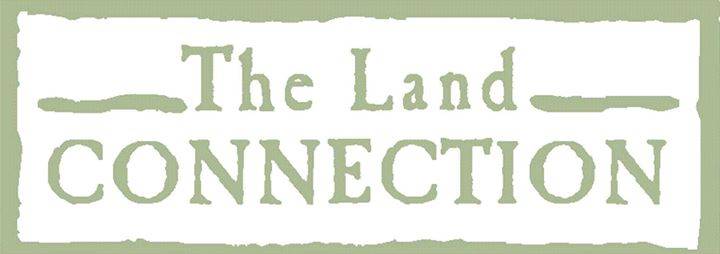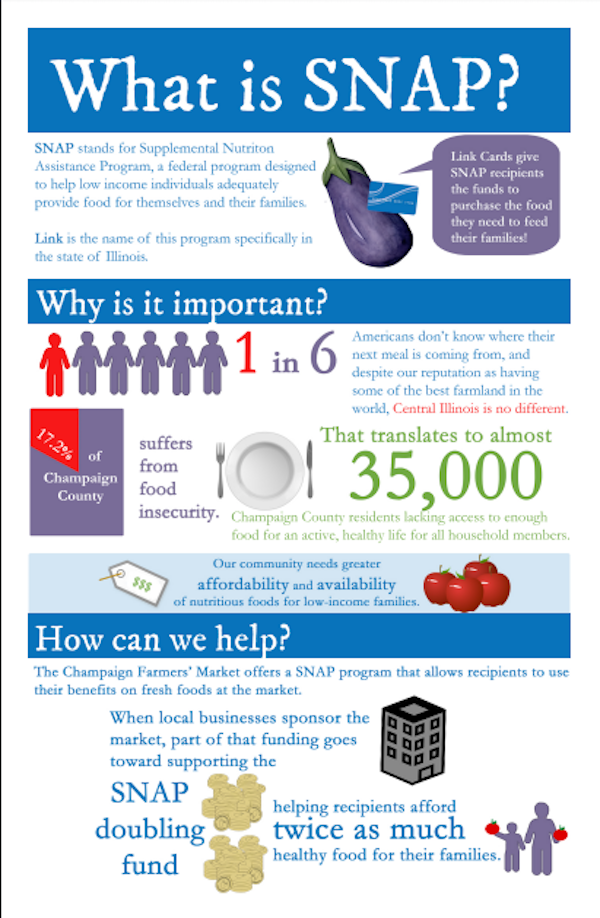
Last month, we reported on how Urbana’s Market at the Square was now accepting SNAP benefits for food, and today, we’re happy to announce that The Land Connection Farmers‘ Market in Champaign is offering the same benefits to its customers, doubling the times in a week that people in C-U can use SNAP benefits for fresh, locally-grown food.
For those interested in sponsoring the market, so these programs can continue, feel free to get in touch with TLC here.
From The Land Connection:
How the system works is this: patrons who have a Link card can swipe it at the market in exchange for tokens that they can spend with vendors for Link-eligible products, which is pretty much any non-prepared foods. We then match the number of tokens they purchase up to $20 per week out of our own fund, which means a patron will only have $20 taken out of their account, but will get $40 to spend. The tokens are not redeemable for cash, and they come in $1 increments so that they can spend them easily with the vendors and not require cash back as change (which is forbidden).
The program is designed to help expand food budgets and provide incentives to shoppers to purchase local or unfamiliar produce. Buying produce is often a gamble for people with limited food budgets. They often hesitate because they don’t want to risk a product going bad and wasting their money. We’re hoping to encourage more purchases of healthy fruits and vegetables, emphasizing that at the farmers’ market there is less risk of produce going bad quickly, because it is so fresh, having been harvested only a day or two before (or often the very same morning). We also want the farmers’ market to feel more welcoming for the whole community. There’s a perception that farmers’ markets are expensive yuppie places to shop, and that they’re “overpriced”. First of all, they’re not always more expensive than your average grocery store, particularly when crops are in peak season, and second, even when they appear more expensive, we want people to understand that they have so much more value, in terms of taste and nutrition.
It’s also a boon to our vendors. The added funds boost sales, and they also bring us back to the original intention of the first food stamp program, which was designed in 1939 to connect farmers who had surplus crops they couldn’t sell with hungry citizens in need. We live in an area exploding with specialty crops, but they don’t always get connected efficiently with our community, and Champaign County has one of the highest food insecurity rates in the state.









